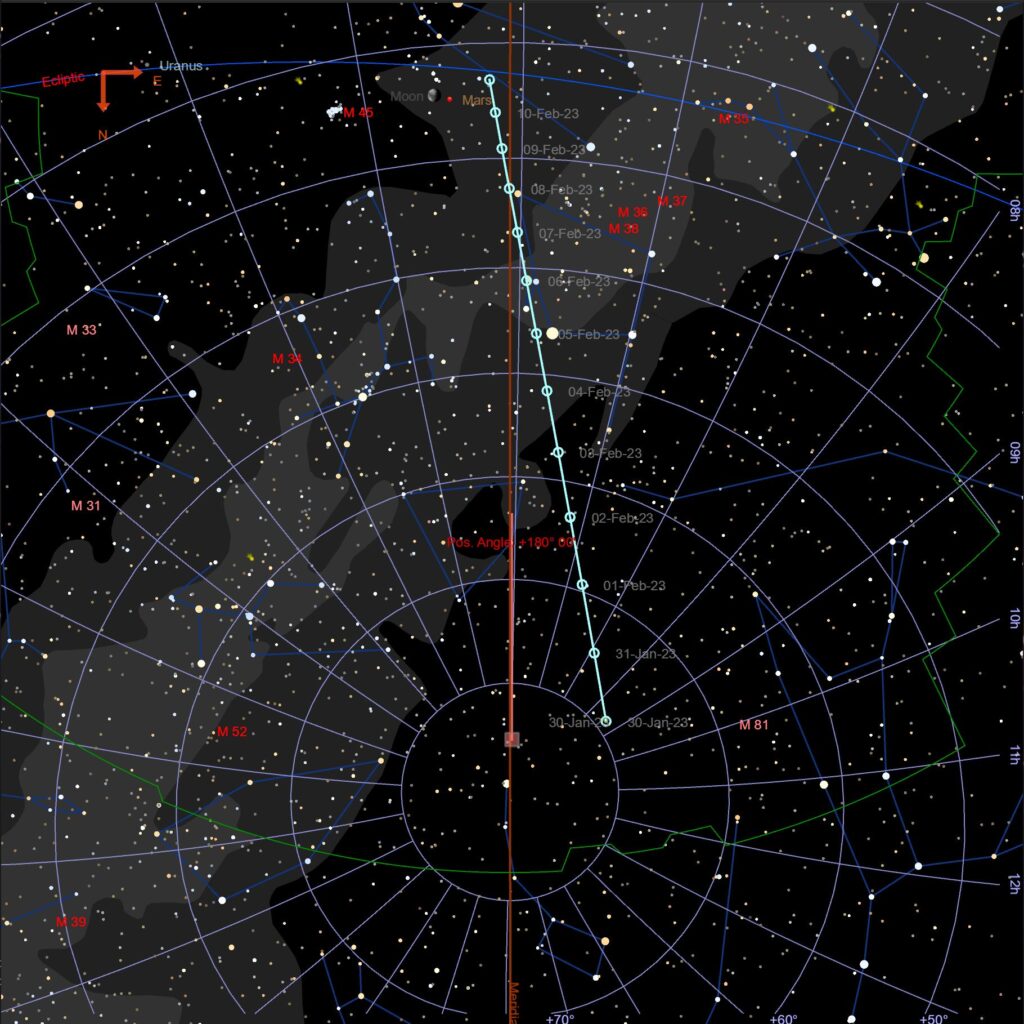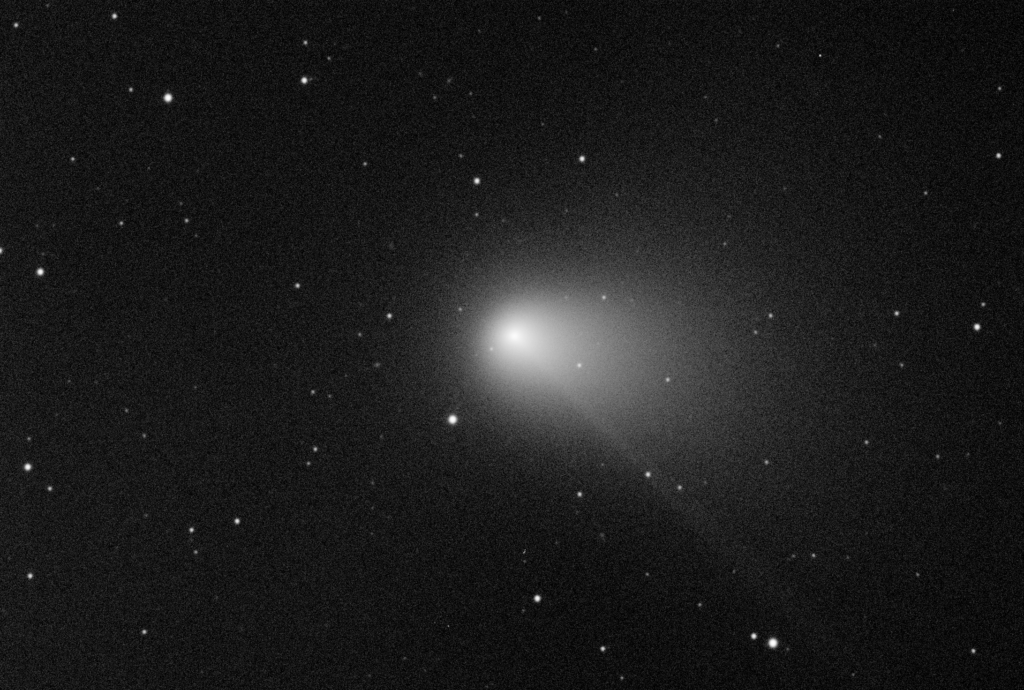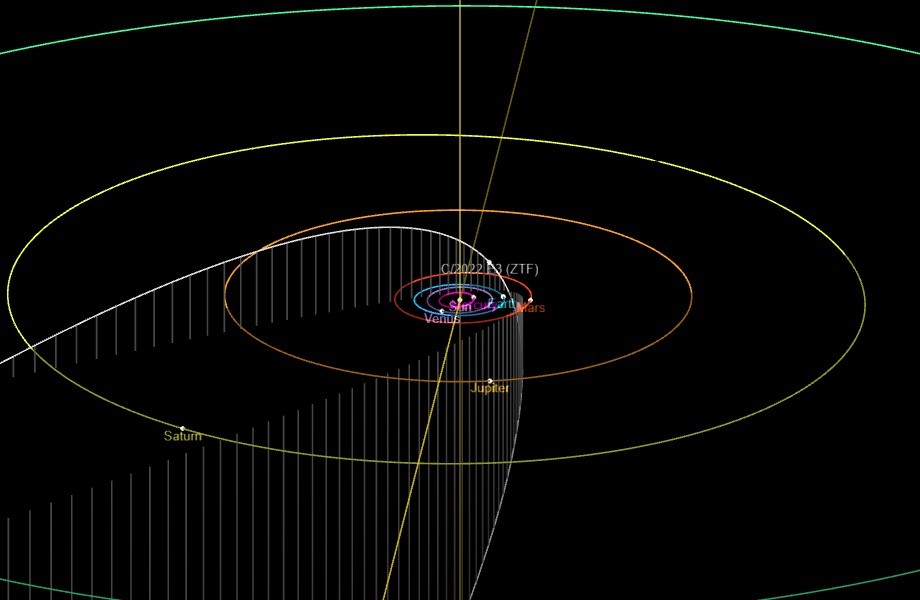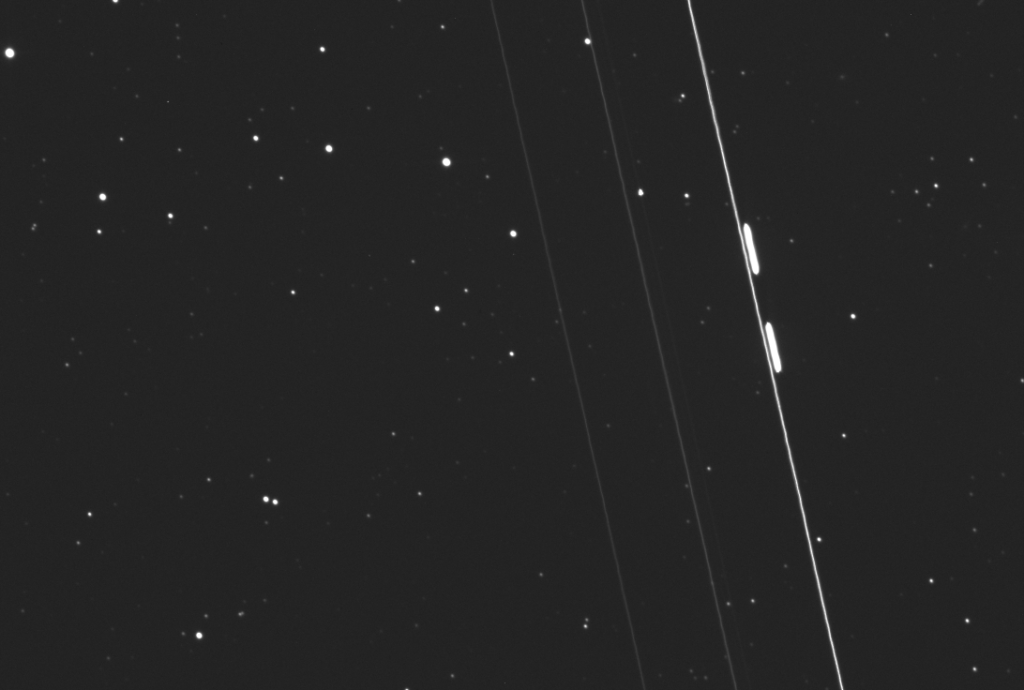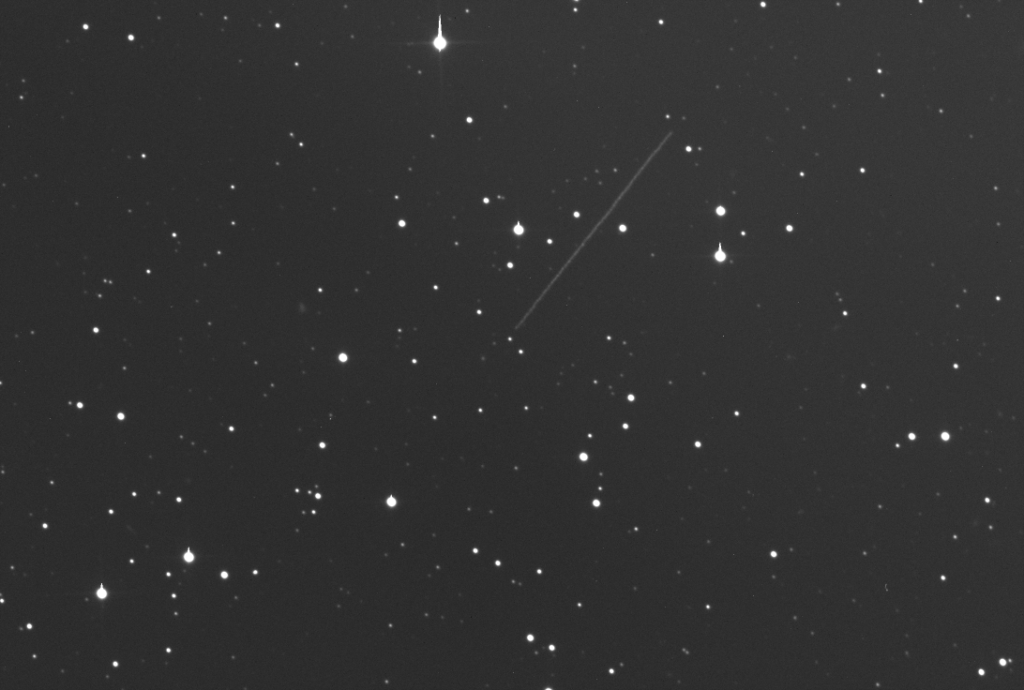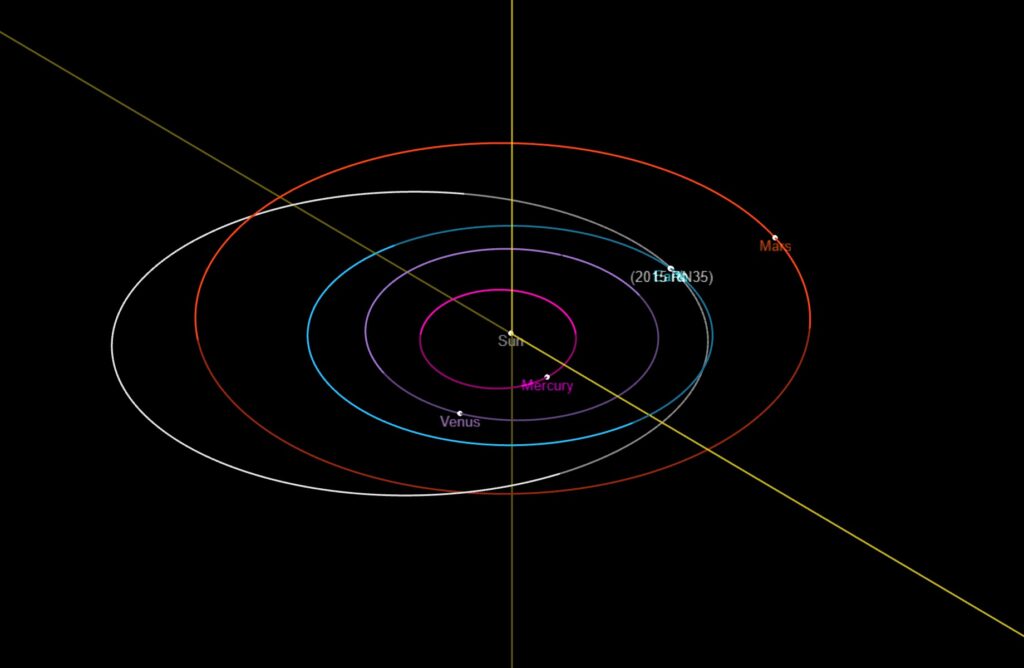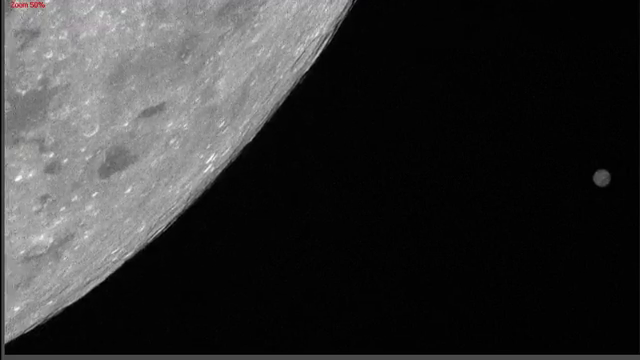This is a map of the sky at 2000 CST. It shows the location of the comet at that time and the path shows the location for future dates at 2000 CST. As you can see, the North Celestial Pole is at the bottom as if you were looking North. Right now, with the light pollution in the area, the can be seen using binoculars. You will not be able to see any of the tail. It will appear as a slight smudge of light.
This is what I get for not checking the meteor camera every morning. According to the American Meteor Association web page there were 39 reports of a Wednesday morning fireball at the same time my camera recorded this object. We can safely assume this is the same event (#185-2023).
My camera recorded this starting at 0411. I haven’t heard any report on the suspected identity of the object but, my guess would be space junk, but that is just a guess.
UPDATE: I was just advised that this was the recent SpaceX Dragon capsule (mission CRS-26) returning from the ISS on its way to a splashdown off the coast of Tampa. The timing lines up so I am willing to accept the ID.
Due to prompting from some of my west coast friends, I stayed up way too long and got these images of the “green comet” just before encroaching clouds and pending dawn stopped the session. Additional interference was light from a 16-day old Moon. But this stack shows the comet is developing a nice tail.
The comet is a long period comet. JPL says the orbital period is not defined; other sources just say the orbit is greater than 50,000 yrs. It spends most of that orbit below the ecliptic, but right now is above it and just outside Earth’s orbit. It will cross below the ecliptic around the 12th of February roughly halfway between the Earth and Mars. It will be closest to the Earth on the 1st of February.
So, this is just a preview. In a couple of weeks, the comet will be above the tree line at a more convenient time (0300), the Moon will not be up, and I will be able to take the necessary exposures to put together a color photo.
Near-Earth asteroid 2015 RN35 flew past the Earth on the 15th of December 2022 at a distance of roughly 426,000 mi (686,000 km). The size of the asteroid is estimated to be in the of 200 to 460 feet in diameter. This is close enough and large enough to get the usual internet suspects to issue dire warnings. But as usual, those predictions were way overblown.
Due to the proximity of the event to year-end holidays some were even calling it a “Christmas Asteroid”. However, with the closest approach on the 15th and the predicted visibility ending by the 19th I would argue that “Hanukkah Asteroid” would be a better moniker.
Unfortunately, on the 15th, the PTO was configured to image main belt asteroids, not near-Earth asteroids. So, it was quite a challenge to find and image something moving as quick as the asteroid was. I fully expected to get a streak as the asteroid flew through the telescope field-of-view. However, I was not expecting this.
Even though I live less than a mile from the end of a major airport’s runway, I rarely get photo-bombed by one of the aircraft. There is a lot of traffic, but I am looking at too small of a chunk of sky to have one pass through that little spot. By pointing the scope in front of the anticipated path of RN35 and taking a series of blind exposures, I was able to get a quick look at it as it passed by.
This image was enough to encourage me to set up a different software configuration on the next night (the 16th) and take the series of images used to make the following animation. This is a series of sixty 60 second shots. Yes, you do see a satellite pass through the FOV right at the end of the video.
The asteroid is in a 654 day orbit with its aphelion just outside of Mars’ orbit.
Even though the occultation of Mars by the Moon was not visible in the Florida panhandle, we were close enough that it was a near miss. While this is not one of my normal occultation targets, I was able to come up with a combination of scope and camera to get both objects into one field of view. I was able to live stream about 12 minutes of the Moon closing on Mars before clouds ended any possibility of watching the rest of the event.
This is one frame of the streamed video. I was pleasantly surprised that surface detail was still visible on Mars with the camera gain set as low as it was to prevent overexposure of the Moon.
